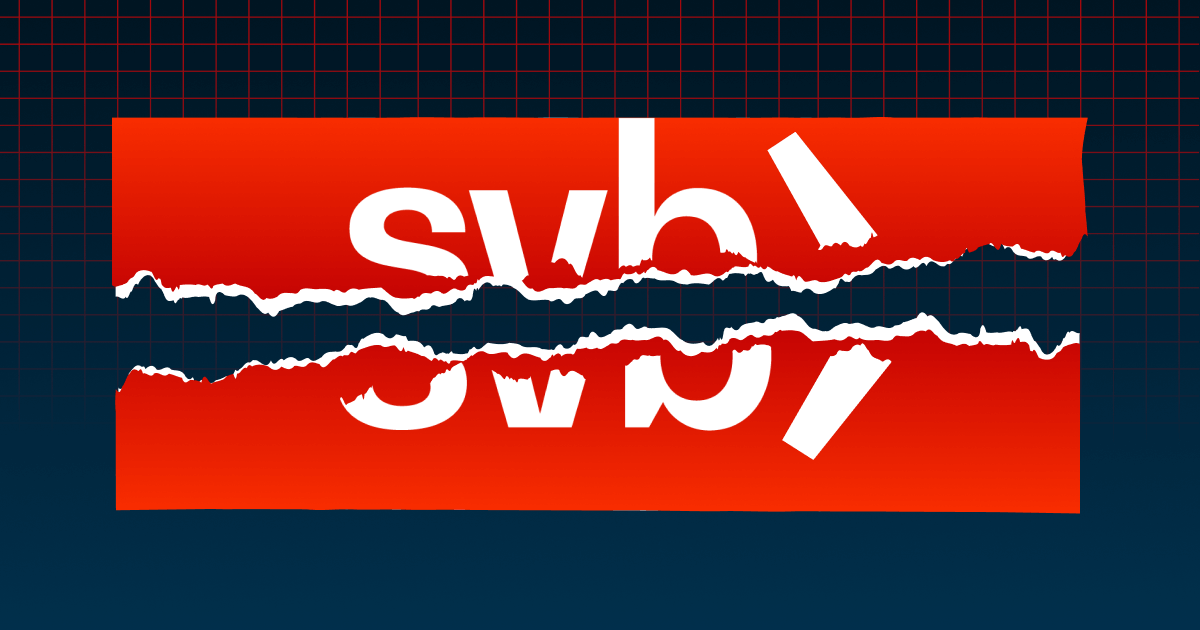Until last Friday, Silicon Valley Bank (SVB) was one of the largest banks on the face of the planet, worth over $200 billion. But all that changed on March 10th, when SVB had a bank run that saw it become the largest bank failure in the history of the United States after the 2008 financial crisis.
How did this change happen overnight? Who was to blame? Let’s find out!
SVB’s History
Silicon Valley Bank was founded in 1982 in a region famous for its tech pioneers. Over the next 40 years, the institution grew to become the 16th largest bank in the world and became the banking partner of choice for every entrepreneur in the world. Start-ups flocked to SVB with their deposits and for their loans. And by 2023, a majority of the bank’s clientele was just start-ups.
The Lead-Up to the Bank Run
As the tech sector’s favored bank, the demand for SVB’s services only grew during the pandemic. And as the initial economic shock from COVID-19 wore off, the tech sector (both start-ups and established companies) saw a boom in growth as consumers spent big money on gadgets and services.
And money flowing into the tech sector meant a huge influx of cash for SVB. A large number of these companies deposited their funds in the bank. And like all banks do, SVB invested this money in interest-generating assets. The problem lay with the assets they chose to invest in.
Long-dated bonds
SVB invested heavily in long-dated US government bonds. In principle, this investment was not flawed in any way. Good returns, safe asset. SVB had ticked all the boxes.
Trouble began brewing when the Federal Reserve set out to combat inflation. You see, when interest rates rise, bond prices fall. So when the Fed began raising interest rates to check inflation, SVB’s bond portfolio took a pretty big hit.
If the bank would’ve been able to hold these assets for a few years, its portfolio would’ve recovered automatically. However, as the economy worsened over the last year, SVB’s customers started withdrawing their deposits to meet expenses. SVB had to sell some of its bonds at steep losses to pay them back. And as expected, this spooked investors and customers alike.
How the Bank Run Was Triggered
While SVB had already dug its own grave with some unfortunate investment decisions, the final nail in the coffin was its announcement for a sale of its in-house bonds to raise capital worth $1.75 billion. Investors were told it was a sale to plug the loss caused by the sale of the loss-making government bonds.
This sent alarm bells ringing. Investors and customers were suddenly worried that the bank did not have enough capital, and the deposits that were flowing out in a trickle turned into a flood. Everyone wanted their deposits back before the bank went bankrupt. And once SVB’s clients started draining their massive accounts, the bank run was inevitable.
The announcement for the sale of bonds came on 8th March, and by 10th March, the 16th-largest bank in the world had collapsed.
The U.S. Government’s Intervention
The U.S. government was quick to act, shutting down concerns of a contagion risk- all of SVB’s customers have been guaranteed a refund on their deposits.
And since there were now questions arising about how secure the funds held in every other bank were, the Fed unveiled a program that will allow banks to borrow funds backed by government securities in situations where they’re not liquid enough to return customers’ deposits. This is meant to prevent banks from selling assets at a loss to meet customer demands, as SVB had to.
To be clear, the government is not bailing out SVB. They have promised to return the customers’ funds but are not obligated to keep the bank functional. The bank will stay in its collapsed state unless a buyer can fund its revival.
Ripple Effects of the Collapse
SVB’s unforeseen collapse affected a lot of major players in the industry. Circle, the organization that issues USDC, was one of them. Once investors learned that a portion of Circle’s funds were held in SVB, there was a mad rush to redeem their USDC, leading to the stablecoin losing its peg to the US Dollar. At one point, it dropped to as low as 86 cents.
Following this, Circle issued a statement acknowledging that $3.3 billion of its $40 billion reserve was deposited in SVB. It also stated that any shortfalls in USDC reserves would be covered by corporate funds. This, coupled with the US government’s announcement that it would return all depositors’ funds, helped the stablecoin recover its peg to the USD.
A number of major crypto exchanges suspended USDC trading on March 10th but were quick to reverse this decision once the coin recovered.
Our Takeaway
SVB’s collapse wasn’t the result of the bank performing any under-the-table activities. It was simply an unfortunate investment at a bad time. But irrespective of the reasons, the tech sector has just lost one of its biggest supporters at a time when the industry is navigating troubled waters- economic conditions have already seen many tech giants cutting down on staff.
However, this will definitely make the government think twice about raising interest rates any further. While the demise of SVB might not have long-lasting effects on the economy owing to the government’s intervention, this rescue act cannot be replicated multiple times. So essentially, we might see interest rate hikes taking a back seat, at least for the time being.




